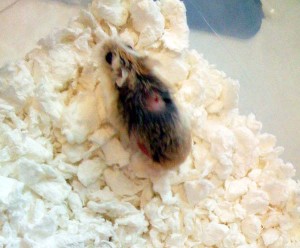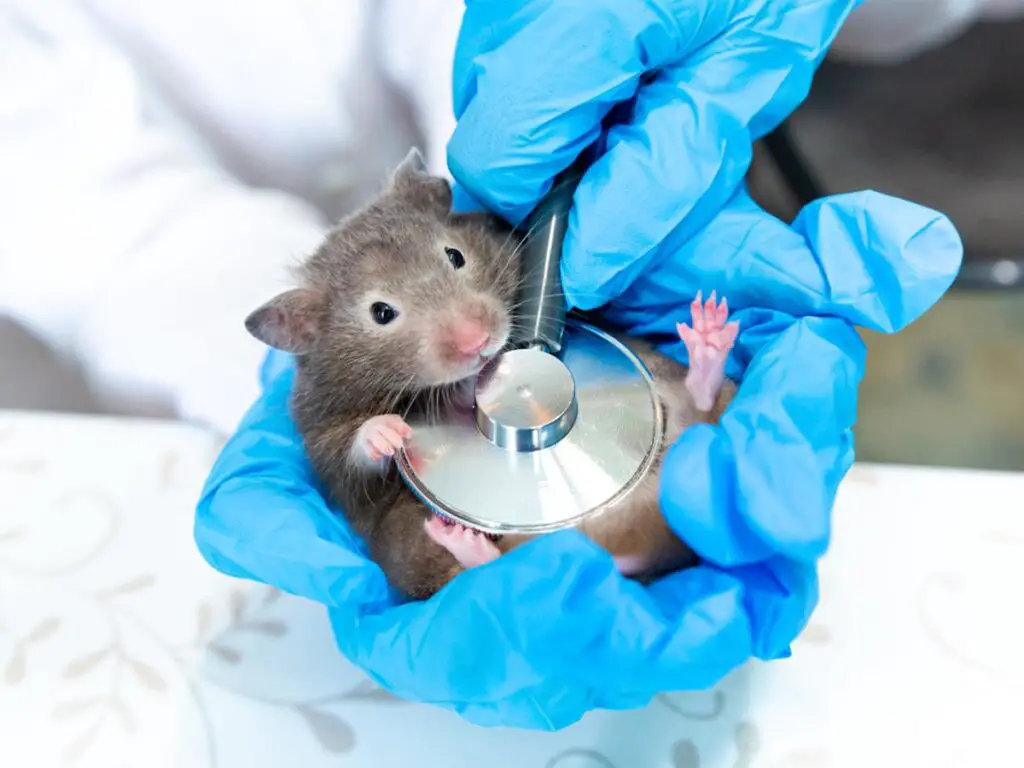As a hamster owner, nothing is more important than keeping your furry friend healthy and happy. Unfortunately, hamsters are prone to skin parasites that can cause serious health issues if left untreated. In this blog post, we’ll explore the most common types of skin parasites in hamsters and provide tips on how to prevent, identify, and treat them.

1. Introduction: Understanding Hamster Skin Parasites
Hamster owners should be aware of the possibility of their pets getting skin parasites such as mites, worms, or sudden fur loss. Understanding the types of parasites that can affect hamsters, like Demodex mites, is important in order to identify and treat any issues. These parasites can be caused by various sources such as pet stores, breeders, and shelters. Common symptoms of skin parasites in hamsters include itching, hair loss, and scratching. Preventative measures such as proper hygiene and natural remedies like essential oils and aloe vera can be used to keep hamsters healthy and happy. By educating themselves on hamster skin parasites, owners can take proactive steps in ensuring their pet’s well-being.

2. Types of Hamster Skin Parasites: Demodex Criceti and Demodex Aurati
Hamsters can be prone to skin parasites, and two of the most common types are Demodex Criceti and Demodex Aurati. Both species of mites can cause demodicosis, also known as mange, which can lead to itching, hair loss, and scratching in hamsters. Demodex Criceti is a short mite that lives in the epidermal pits of the hamster’s skin, while Demodex Aurati also lives in the same area but is longer and thinner in appearance.
These parasites can be picked up from pet stores, breeders, and shelters, so it’s important to check your hamster for signs of infestation and take preventative measures to keep them healthy and happy.
3. Causes and Sources of Hamster Mites: Pet Stores, Breeders, Shelters and More
Hamsters can easily contract skin parasites from multiple sources, including pet stores, breeders, and shelters. These sources may unknowingly house infected animals, and the mites can quickly spread to other animals. When acquiring a new hamster, it is important to thoroughly check for any signs of skin parasites or speak with a veterinarian about preventative measures.
Additionally, hamsters can also contract mites from their environment, such as contaminated bedding or toys. Regular cleaning and disinfecting of the hamster’s cage and accessories can help prevent the spread of mites. Proper hygiene and housing conditions can go a long way in keeping your hamster healthy and happy.

4. Symptoms of Hamster Mites: Itching, Hair Loss, and Scratching
One of the most noticeable symptoms of hamster mites is excessive scratching. This can be particularly frustrating for hamsters, as it can cause irritation and discomfort. Additionally, hair loss is common in hamsters that have been infested with mites. This hair loss is typically concentrated around the tail, face, ears, and feet. Finally, hamsters may also develop reddened, inflamed, or irritated patches of skin in areas affected by mites.
It is important for pet owners to pay close attention to their hamster’s behavior and appearance, as early detection and treatment can make a big difference in the outcome of the infestation. In the next section, we will explore some prevention and treatment options for hamster skin parasites.

5. Prevention and Treatment of Hamster Skin Parasites
Preventing and treating hamster skin parasites is essential to keeping your furry friend healthy and comfortable. The best prevention method is to maintain a clean enclosure and wash any new toys or bedding thoroughly before introducing them to your pet. Avoid water or powder baths as they can strip natural oils from your hamster’s skin. Instead, consider providing a sand bath for your hamster to aid in self-cleaning. If your hamster does contract skin parasites, the most common treatment is medication, such as ivermectin, administered by mouth for one to two weeks. It’s important to consult with a vet for proper diagnosis and treatment.
Some natural remedies, such as essential oils and aloe vera, can also be used to aid in skin healing. Regularly checking your hamster for signs of skin parasites and maintaining proper hygiene is crucial in preventing and treating skin conditions.

6. Natural Remedies for Hamster Mites: Essential Oils, Aloe Vera, and More
Hamster mites can be a pesky problem for our furry friends, but there are natural remedies that can help ease their discomfort. One of the most effective home remedies is tea tree oil, which can be applied topically to affected areas. Aloe vera gel can also have a soothing effect on sunburned skin and alleviate itching caused by mites.
Additionally, certain oils such as lavender and neem oil are known to have insecticidal properties and can be used to repel mites. It’s important to note that while natural remedies can be helpful, they should always be used in conjunction with veterinary care and a clean living environment for your hamster.

7. Common Misconceptions about Hamster Mites
One common misconception about hamster mites is that they only affect dirty or neglected pets. However, mites can affect any hamster, regardless of its living conditions or hygiene habits. Additionally, some people believe that mites can be easily eliminated with a simple bath or cleaning of the cage. However, mites can be stubborn pests that may require specialized treatments and medications prescribed by a veterinarian.
Furthermore, many people assume that if one pet in a household has mites, all other pets are automatically infected as well. While it is important to keep all pets in a household clean and monitored, it is not always the case that all pets will be affected by mites. It’s always best to consult with a veterinarian for proper diagnosis and treatment of hamster mites.

8. How to Check for Hamster Mites: Simple Tips
To ensure the health and well-being of your hamster, it’s important to regularly check for skin parasites such as mites. These tiny creatures can cause your pet immense discomfort and irritation, so early detection is key. A simple way to check is by brushing your hamster’s fur while holding them over a piece of white paper. Use a magnifying glass to inspect the paper for any mites that have fallen off. You can also look for signs of infestation such as reddened, inflamed patches on their skin.
If you suspect your hamster has mites, it’s important to take them to a vet who can carry out a microscopic examination of their skin samples and recommend the appropriate treatment. Regular hygiene practices, including keeping their cage clean, will also help prevent mites from taking hold. Remember, a healthy and happy hamster is a joy to have as a pet!

9. The Importance of Proper Hamster Hygiene to Prevent Mites
Proper hygiene is vital for preventing hamster mites, so it is essential to keep your hamster’s cage and bedding clean. Regularly removing waste and replacing soiled bedding will prevent mites from breeding and infesting your hamster’s habitat. In addition, hamsters should be given a sand bath to clean their fur and remove excess oils.
It is also essential to avoid exposing your hamster to sources of mites, such as wild rodents or contaminated bedding. Your hamster’s health is paramount, and maintaining proper hygiene can help prevent parasitic infestations, keeping your beloved pet safe and healthy.

10. Conclusion: Keeping Your Hamster Healthy and Happy
In conclusion, keeping your hamster healthy and happy should always be a top priority. Regularly checking for signs of skin parasites, providing a clean and safe habitat, and proper hygiene are just a few ways to ensure your furry friend stays healthy. It’s important to remember that hamsters are best kept individually and to avoid using bedding that can cause skin irritations. If you do notice any signs of mites or other skin disorders, it’s important to seek treatment immediately. With proper care and attention, your hamster can live a long and happy life.
- Hamster Comparison: Which Breed Is The Perfect Fit For You? - April 15, 2024
- From Price To Value: Understanding The True Cost Of Owning A Hamster - April 15, 2024
- Harmony In Hamster Homes: Exploring Hamster Compatibility With Other Pets - April 15, 2024

